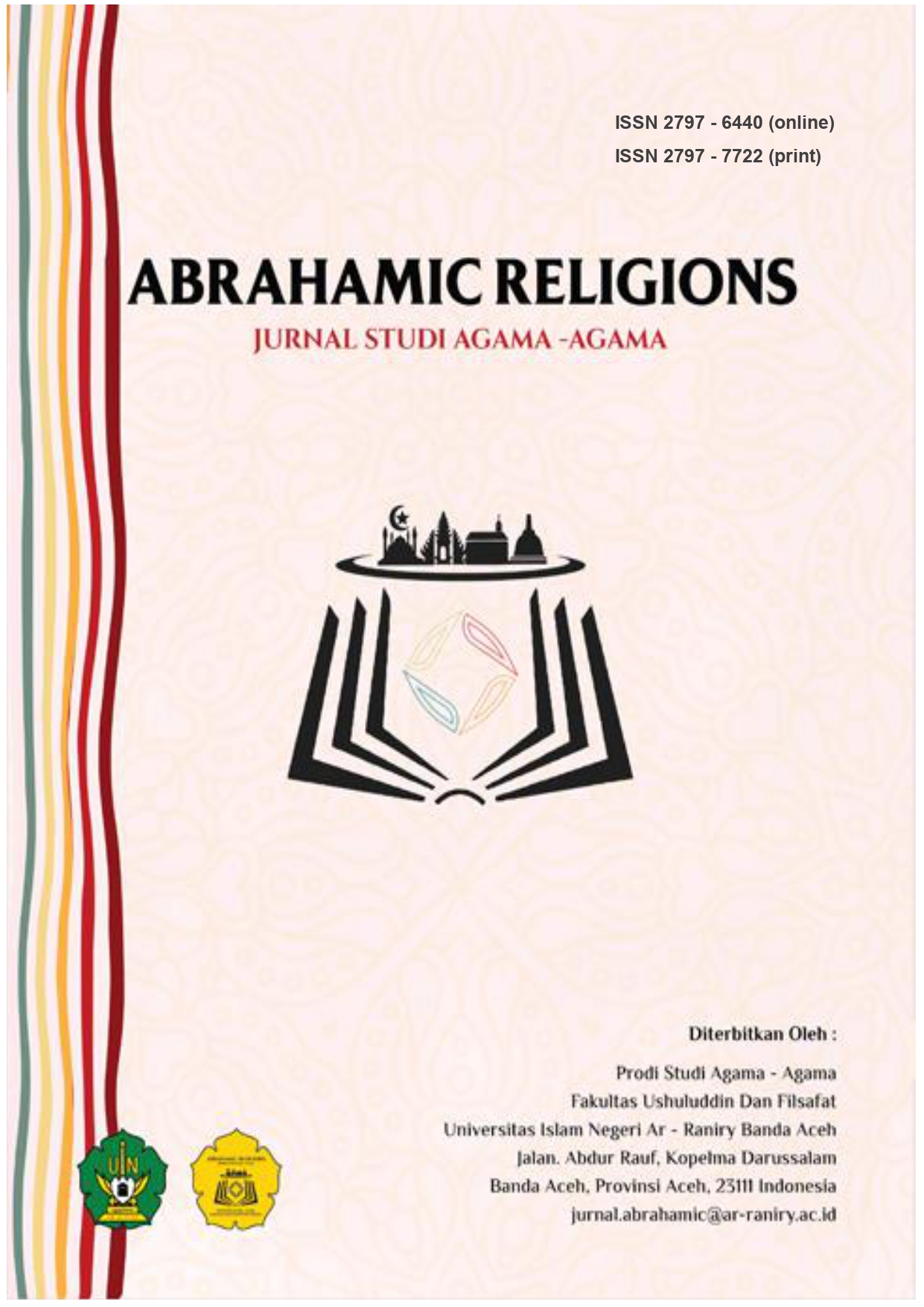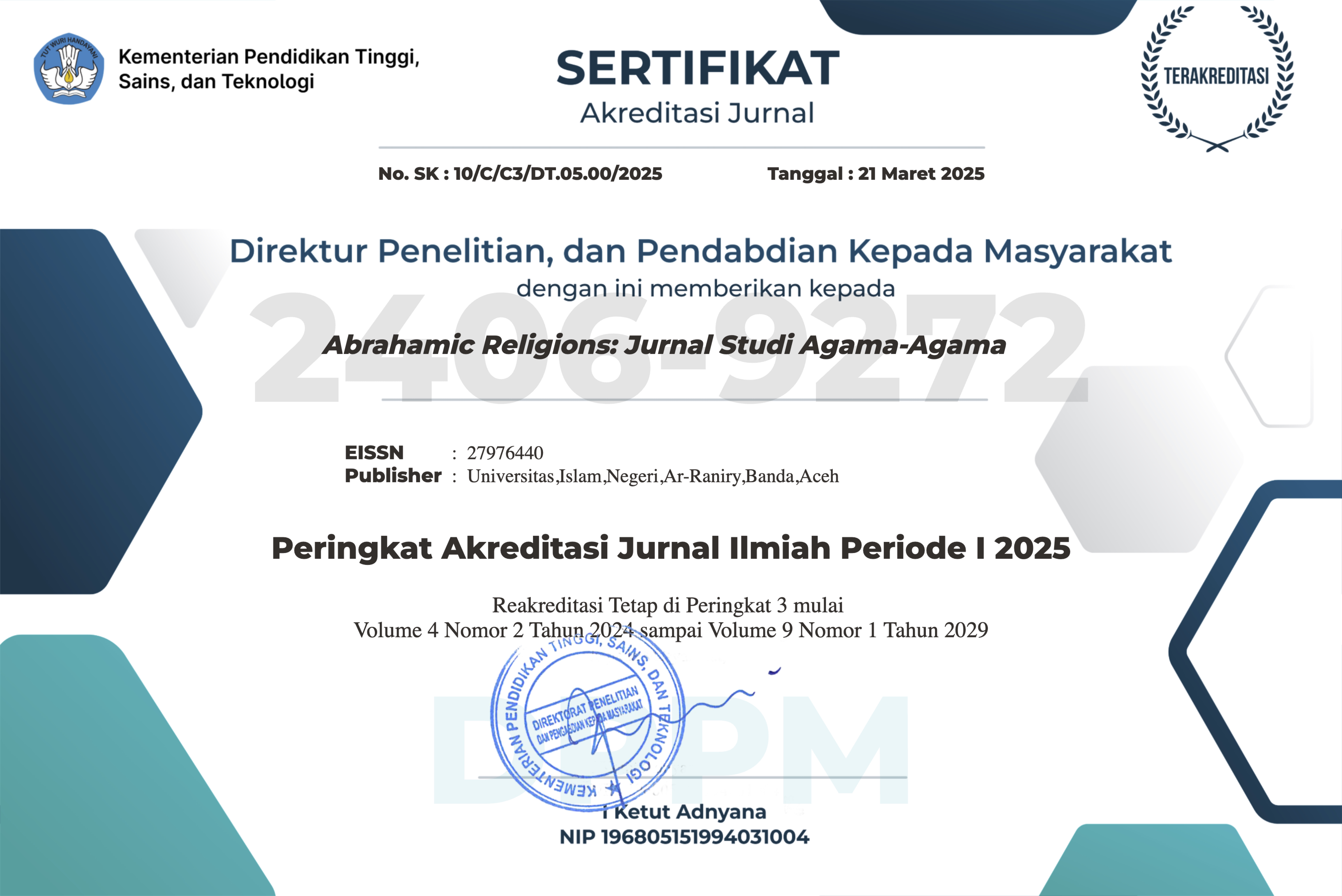Religious Conflict Management: A Study on the Ansor Youth Movement and Muhammadiyah in Lamongan, Indonesia
DOI:
https://doi.org/10.22373/arj.v4i1.22512Keywords:
Religious, Conflict Resolution, Ansor, MuhammadiyahAbstract
Violence in the name of religion continues to sprout within Indonesian society. This article aims to describe the religious conflict resolution model of the NU Ansor Youth Movement and the Muhammadiyah Youth of the Paciran Lamongan Branch. This research employs a qualitative method with a sociological approach to religion, and data collection was conducted through interviews and the study of relevant literature. The findings of this study indicate that: 1) Both the NU Ansor Youth Movement and Muhammadiyah Youth reject violent models of preaching. 2) There is a difference in attitude towards perpetrators of violence, where the NU Ansor Youth Movement tends to adopt a non-accommodative firm stance, unequivocally rejecting and insisting that perpetrators of violence must be punished according to legal statutes, whereas Muhammadiyah Youth exhibits a firm-accommodative attitude, sternly condemning acts of violence but remaining willing to embrace and invite the perpetrators back to a tolerant and inclusive understanding. 3) The media of resolution employed include issuing advisory letters, press releases to the media, dialogues among community elements, conveying deradicalization insights through religious study sessions (Yasinan and Tahlilan), and the formation of Densus 99 Anti-Terror. 4) The conflict resolution model consists of two stages: long-term, aiming to build cadre awareness of the importance of a tolerant attitude and peaceful living through education, training, social and economic empowerment, ideological development, and the distribution of cadres to the public domain; and short-term, wherein preaching programs are executed sporadically and reactively at the time or after acts of violence to prevent the expansion and escalation of conflict.
References
Abdullah, Amin. (2011). Studi Agama: Normativitas atau Historisitas. Pustaka Pelajar.Yogyakarta.
Al Zastrow, Ng. (2006). Gerakan Islam Simbolik Politik Kepentingan FPI. LKiS. Yogyakarta
Arifin, Syamsul. (2009). Percik Pemikiran Para Kia. LKIS. Yogyakarta
Bungin, Burhan. (2007). Penelitian Kualitatif. Prenada Media Group. Jakarta
Danim, Sudarwan. (2002). Menjadi Peneliti Kualitatif. Pustaka Setia. Bandung.
Dhofier, Zamakhsari, 1994. Tradisi Pesantren. LP3S. Jakarta.
Effendi, Sofian Masri Singarimbun. (1995). Metode Penelitian Survey. LP3ES. Jakarta
Formm, Eric. (2004). Akar Kekerasan: analisa Sosio-psyikologis atas watak Manusia. ter. Imam Muttaqin. Pustaka Pelajar. Yogyakarta.
GP Ansor NU DKI, (2011). Apa itu ansor. http://pw-gp-ansor-dki-jakarta.blogspot.com/apa-itu-ansor.html
Hidayat, Qomaruddin. (2012). Agama Punya Seribu Nyawa. Naoura Books. Jakarta.
Huda, Sholihul. (2011). Transisi Ideologi:Studi tentang Gejala Pergeseran Ideologi Aktifis Muhammadiyah yang aktif di FPI Paciran Kabupaten Lamongan. Tesis.IAIN Sunan Ampel Surabaya.
Kusumandaru, Ken Budha. (2003). Karl Marx, Revolusi dan Sosialisme. Resist Book. Yogyakarta
Legowo, Martinus dan FX Sri Sadewo. (2009). Partisipasi Politik Kelompok Minoritas Pada Masa Transisi (1990-2004) di Jawa Timur. Laporan Penelitian. UNESA, Surabaya.
Majid, Nurkholis. (1998). “Islam dan Politik: Suatu Tinjauan atas prinsip-prinsip Hukum dan Keadilan” Paramadina. Juli-Desember, No. 1.
Maliki, Zainuddin. (2004). Amok Massa dan Upaya Penyelesaiannya di Jawa Timur. Laporan Penelitian. Universitas Muhammadiyah, Surabaya.
Manullang, AC. (2001). Menguak Tabu Intelijen Teror, Motif dan Rezim. Panta Rhei. Jakarta
Nasher, Haedar. (2007). Meneguhkan Ideologi Gerakan Muhammadiyah. UMM Press, cet ke- 2. Malang
Pemuda Muhammadiyah. (2012). Tanfidz Tanwir Pemuda Muhammadiyah tahun 2013. PPPM. Jakarta
Said Al Syamawi, Muhammad. (1987). Al-Islam Al-Siyasi. Sina li al-Nasyr. Kairo
Santoso, Thomas. (2002). Teori-teori KekerasanJakarta. PT Ghalian Indonesia dengan Universitas Kresten Petra. Surabaya
Sazali. (2005). Muhammadiyah & Masyarakat Madani. PSAP. Jakarta
SETARA INSTITUTE. (2021). Laporan Kebebasan Berkeyakinan (LKBB). https://setara-institute.org/kondisi-kebebasan-beragamaberkeyakinan-di-indonesia-2021/)
Setiawan, Hersri, (2003). Negara Madiun?Kesaksian Soemarsono Pelaku Perjuangan.FuSPAD. Jakarta
Snyder, Jack. (2003). Dari Pemungutan Suara ke Pertumpahan Darah. Demokratisasi dan Konflik Nasionalis. (terj) Martin Aleida dan Parakitri T. Simbolon. Kepustakaan Populer Gramedia. Jakarta.
Sumbulah, Umi. (2006). “Agama, Kekerasan dan Perlawanan Ideologis, Jurnal Islamica. Pasca Sarjana IAIN Sunan Ampel Surabaya. Volome.1, No.1. September. 5-6
Syam, Nur. (2001). Islam Pesisir, LKiS. Yogyakarta
Syuhadi, Fathurrahim. (2006). Mengenang Perjuangan:Sejarah Muhammadiyah Lamongan 1936-2005. Java Pustaka. Surabaya
Wahid Institut. (2018). Presentasi-Laporan-Kemerdekaan-BeragamaBerkeyakinan-Wahid-Foundation-2018. https://wahidfoundation.org/index.php/publication/detail//
Wahyono, Ary. (2001). Pemberdayaan Masyarakat Nelayan. Media Gresindo. Yogyakarta
Webber, Max. (2012). Sosiologi Agama, Yogyakarta: Ircisod
Wignyosoebroto. (1997). Tindakan Kekerasan Terhadap Perempuan:Adakah Kondisi Sosial Kita Ikut Menyuburkanya. Seminar Masyarakat Dalam Mengahadapi Tindakan Kekerasan. 18 Oktober 1997
Yaqin, Haqqul, (2009). Agama dan Kekerasan dalam Transisi Demokrasi di Indonesia. Elsaq Press. Yogyakarta
Downloads
Published
Issue
Section
License
Authors who publish in this Journal agree to the following terms:
- Authors retain copyright and grant the journal right of first publication with the work simultaneously licensed under Attribution-ShareAlike 4.0 International (CC BY-SA 4.0) allows others to share the work with an acknowledgment of the work's authorship and initial publication in this journal.
- Authors are able to enter into separate, additional contractual arrangements for the non-exclusive distribution of the journal's published version of the work (e.g., post it to an institutional repository or publish it in a book), with an acknowledgment of its initial publication in this journal.
- Authors are permitted and encouraged to post their work online (e.g., in institutional repositories or on their website) prior to and during the submission process, as it can lead to productive exchanges, as well as earlier and greater citation of published work. (See The Effect of Open Acces)















